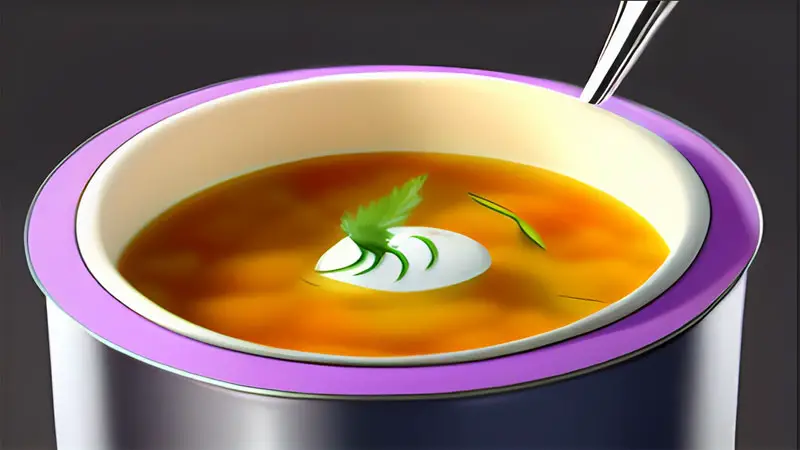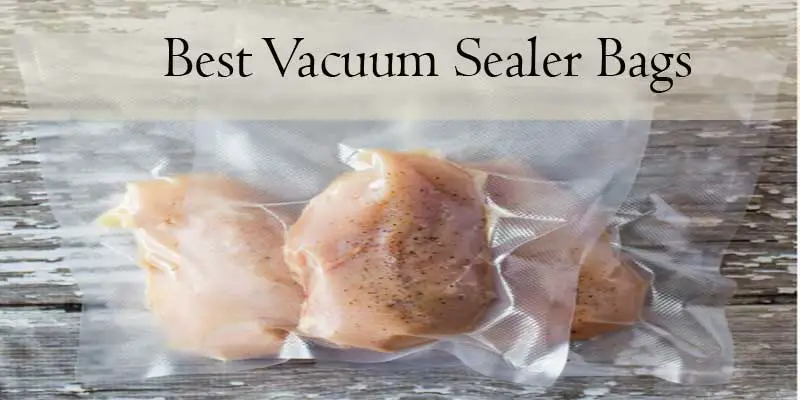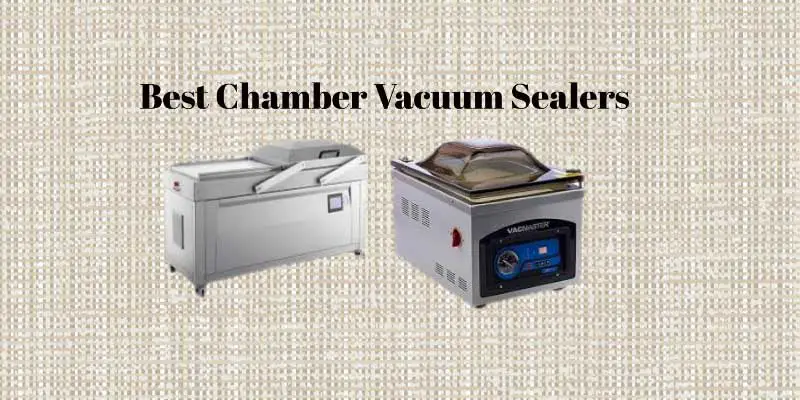Have you ever made a big pot of your favorite soup, only to realize that there’s simply too much to eat before it goes bad? Or perhaps you’re a meal prep enthusiast looking to extend the freshness and convenience of your homemade delicacies. Whether it’s Grandma’s secret recipe or a comforting chicken noodle, knowing how to vacuum seal soup can revolutionize your kitchen practices.
This method not only offers an extended shelf life, but it also locks in the flavors, ensuring that every reheated bowl tastes as delightful as the first. Join us as we delve into the process of vacuum sealing soup, sharing practical tips and techniques to help you master this art of food preservation.
Can you vacuum seal soup
Absolutely, you can vacuum seal soup, and it’s a highly effective method for preserving this comforting dish. Vacuum sealing extends the shelf life of soup by removing air from the package, creating an environment that inhibits bacterial growth.
The process locks in the flavors, nutrients, and textures, ensuring your soup tastes as delightful reheated as when it was freshly cooked.
Moreover, vacuum sealing protects against freezer burn, making it a perfect choice for those looking to freeze batches of soup for later consumption.
Whether you’re a meal prep enthusiast or just want to preserve a big batch of your favorite homemade soup, mastering the art of vacuum sealing soup can be a game-changer in your kitchen practices.
Understanding Vacuum Sealing
Vacuum sealing, a preservation method that has taken the culinary world by storm, is a technique that’s as ingenious as it is practical. It involves extracting the air out of a package, usually a plastic bag, and then sealing it to keep its contents fresh for an extended period.
Without air, the growth of bacteria and other microorganisms is drastically reduced, preventing spoilage and maintaining the quality of the food.
There are several key benefits that come along with vacuum sealing. Firstly, it extends the shelf life of food, sometimes by several weeks or even months, compared to traditional storage methods. This can be a game-changer for meal preppers or anyone looking to reduce food waste.
Secondly, vacuum sealing locks in flavor. By keeping the contents sealed in a vacuum environment, it retains the aromas and tastes that can be lost in other storage processes.
That means the delicious flavors of your homemade soup are preserved until you’re ready to savor them.
Lastly, vacuum sealing also offers protection against freezer burn, a common issue with long-term freezer storage. Since air is eliminated from the package, it prevents the dehydration and oxidation that leads to this unpleasant occurrence.
Now, your soup can comfortably reside in the depths of your freezer, waiting for the perfect chilly day to warm you up.
In a nutshell, vacuum sealing is an efficient and effective way to keep your soup fresh, flavorful, and free from freezer burn. It’s a method worth mastering for any serious home cook or meal prep enthusiast.
The Science behind Vacuum Sealing Soup
Understanding the science behind vacuum sealing can truly highlight the value of this preservation technique. Vacuum sealing soup operates on a fundamental principle: the removal of air.
By extracting air from the package, we create an environment where bacteria, yeasts, and molds, which need oxygen to grow, are unable to thrive. This dramatically slows down the spoilage process, extending the freshness of your soup.
At a more microscopic level, vacuum sealing also halts oxidative reactions in food. Oxidation not only leads to a deterioration of nutrients but can also cause changes in color, taste, and smell.
When we vacuum seal soup, we’re essentially putting a stop to this reaction, preserving not only the soup’s nutritional value but also its appealing aroma and flavor.
Furthermore, vacuum sealing soup helps protect against freezer burn, an issue that arises when food is exposed to air in the freezer. This typically results in dryness and a change in texture and flavor due to dehydration and oxidation.
By vacuum sealing your soup, you’re creating an airtight barrier that inhibits these changes, ensuring that your soup comes out of the freezer just as tasty and texturally pleasing as when it went in.
In a nutshell, the science of vacuum sealing soup involves creating an oxygen-depleted environment to delay spoilage, prevent oxidation, and safeguard against freezer burn
Necessary Tools and Equipment for Vacuum Sealing Soup
Venturing into the world of vacuum sealing requires a few essential tools and equipment. Here’s a handy checklist of what you’ll need to get started.
Vacuum Sealer
This is the star of the show. A good quality vacuum sealer is an investment that will pay off in the long run. Look for a reliable brand with excellent reviews. Some vacuum sealers come with additional features such as adjustable seal levels and moist/dry food settings.
Vacuum Sealer Bags
These specially designed bags are crucial for vacuum sealing soup. They come in various sizes, so you can choose the one that suits your needs. Make sure to purchase bags that are compatible with your vacuum sealer machine.
Ladle
A sturdy ladle will help you portion the soup into the vacuum sealer bags with ease.
Funnel
A wide-mouthed funnel can help direct the soup into the vacuum sealer bags, minimizing spillage and mess.
Freezer-safe Containers
These will be necessary if you’re planning to freeze the soup. They help to hold the shape of the vacuum-sealed bags while the soup is freezing.
Permanent Marker
This will come in handy for labeling the bags with the soup’s name and date of preparation.
Kitchen Scale
While not mandatory, a kitchen scale can be useful if you want to measure specific portion sizes accurately.
Soup Cooling Equipment
Before vacuum sealing, it’s crucial that the soup is cooled adequately to maintain quality and avoid potential issues with your vacuum sealer. Ice baths or specialized cooling paddles can speed up this process.
Remember, quality equipment is key when vacuum sealing soup. These tools will help ensure a smooth vacuum sealing process, preserving your soup in the best possible way.
The Step-By-Step Process: How to Vacuum Seal Soup
Mastering the technique of vacuum sealing soup is a great skill that can save you time and money, while preserving the flavor of your favorite recipes. Here’s a detailed, step-by-step guide on how to do it right.
Step 1: Preparation
First and foremost, prepare your soup according to your favorite recipe. Once it’s cooked, allow it to cool. Cooling is a crucial step because sealing warm food can lead to bacterial growth. The best practice is to place the soup in the refrigerator or an ice bath to speed up the cooling process.
Step 2: Portioning
While the soup is cooling, you can begin to prepare your vacuum sealer bags. Depending on your vacuum sealer, you may use pre-made bags or cut custom sizes from a roll. Use a ladle and, if needed, a funnel to portion the soup into the bags. Be careful not to overfill the bags and ensure that there’s enough empty space at the top for the vacuum sealer to form a secure seal.
Step 3: Sealing
Once your soup is portioned into the bags, it’s time to seal them. Place the open end of the bag into the vacuum sealer, making sure it’s aligned correctly.
Then, follow the instructions for your particular vacuum sealer model to create a secure seal. Typically, the machine will remove the air and then heat-seal the bag.
Step 4: Freezing
If you’re not going to consume the soup immediately, the vacuum-sealed bags can be frozen for long-term storage. It’s a good idea to place the sealed soup bags on a flat surface like a baking sheet or inside a freezer-safe container until it’s frozen solid.
This helps the soup keep its shape and makes it easier to store in the freezer. Don’t forget to label each bag with the contents and date before placing it in the freezer.
Step 5: Thawing and Reheating
When you’re ready to enjoy your soup, remove the bag from the freezer. The safest way to thaw frozen soup is in the refrigerator overnight.
Once thawed, cut open the bag, pour the soup into a pot, and reheat it on the stove. If you’re in a rush, most vacuum-sealed bags are safe to simmer directly in a pot of water.
By following these steps, you’ll ensure that your soup is safely and effectively vacuum sealed, ready to be enjoyed at your convenience with all its original flavors intact.
Vacuum Sealing Different Types of Soups
While the general process of vacuum sealing soup remains the same, different types of soups may require some special considerations.
Whether you’re dealing with a chunky vegetable soup, a delicate bisque, or a hearty stew, here are some tips to ensure optimal results.
Chunky Soups and Stews
For soups with large chunks of vegetables, meats, or legumes, ensure that these pieces are evenly distributed in the vacuum sealer bags. This will ensure a more balanced and attractive result when the soup is reheated.
Moreover, be cautious not to overfill the bag as chunky ingredients can interfere with the vacuum sealer’s ability to form a secure seal.
Broth-Based Soups
For broth-based soups, such as chicken noodle soup or minestrone, be mindful of the liquid-to-solid ratio in each bag. Aim to have a good balance of both broth and solid ingredients in each portion.
An easy way to do this is to first ladle in the solids and then top off with broth.
Cream-Based Soups
Cream-based soups, like clam chowder or pumpkin bisque, may require a bit more care when vacuum sealing. Because of their thicker consistency, these soups can be trickier to seal.
To avoid potential messes, it can be helpful to first freeze the soup in the bag just until it’s slushy, then vacuum seal it.
Soups with Delicate Ingredients
Soups with delicate ingredients like seafood or soft vegetables may need extra care. Consider lightly blanching vegetables to retain their color and firmness, and ensure seafood is thoroughly but not overcooked to maintain its texture.
These ingredients should be cooled properly before vacuum sealing to maintain their integrity.
Understanding how to vacuum seal different types of soups will not only preserve your food effectively but also ensure that the quality, texture, and taste of your ingredients are maintained, regardless of the soup variety. That way, every time you open a vacuum-sealed bag of soup, you can expect nothing less than perfection.
The Dos and Don’ts of Vacuum Sealing Soup
When vacuum sealing soup, there are certain best practices to follow and common pitfalls to avoid. Here are some essential dos and don’ts that will help you make the most of this method.
Do:
- Cool the Soup: Always cool your soup thoroughly before vacuum sealing. This prevents steam from interfering with the sealing process and reduces the risk of bacteria growth.
- Leave Enough Space: Make sure to leave sufficient space at the top of the bag before sealing. This allows the vacuum sealer to function optimally and ensures a strong, secure seal.
- Double Seal When Necessary: If you’re dealing with a particularly liquid-heavy soup, consider making a double seal for added security. Simply seal the bag as usual, then create a second seal line a few millimeters below the first.
- Label Your Bags: Always label your vacuum-sealed bags with the contents and date of preparation. This helps you keep track of what’s in your freezer and when it should be consumed.
Don’t:
- Overfill Bags: Avoid the temptation to overfill your vacuum sealer bags. Overfilling can prevent the vacuum sealer from forming a proper seal and may lead to leaks.
- Seal Warm Soup: As mentioned earlier, sealing warm or hot soup can encourage bacterial growth. Always cool your soup before vacuum sealing.
- Ignore Manufacturer Instructions: Different vacuum sealers have different operating instructions. Always follow the instructions provided by the manufacturer of your specific model for the best results.
- Forget to Check Seals: Always check the seals on your bags before storing them. If a seal looks weak or compromised, it’s better to reseal the bag to ensure your soup stays fresh.
By following these dos and don’ts, you can ensure the successful vacuum sealing of your soup, leading to longer shelf life, preserved flavor, and overall more efficient food storage.
FAQ Section: How to Vacuum Seal Soup
Q1: Is it safe to vacuum seal hot soup?
No, it’s not safe to vacuum seal hot soup. The soup should be cooled thoroughly before vacuum sealing to prevent the growth of bacteria. Additionally, the steam from hot soup can interfere with the sealing process.
Q2: Can all types of soup be vacuum sealed?
Yes, all types of soup can be vacuum sealed, from broth-based and cream-based soups to chunky stews. However, the process might differ slightly depending on the type of soup and its ingredients.
Q3: How long can vacuum sealed soup last in the freezer?
Properly vacuum-sealed soup can last in the freezer for up to a year. However, for the best quality, it’s recommended to consume the soup within 2-3 months.
Q4: How do I reheat vacuum sealed soup?
To reheat vacuum sealed soup, first thaw it in the refrigerator overnight. Once it’s thawed, cut open the bag, pour the soup into a pot, and reheat it on the stove. Some vacuum-sealed bags can be placed directly in simmering water to heat.
Q5: Do I need special equipment to vacuum seal soup?
Yes, you’ll need a vacuum sealer machine and specific vacuum sealer bags. Other helpful tools include a ladle, a funnel, and freezer-safe containers to hold the shape of the soup while freezing.
Conclusion,
The answer to the question, “can you vacuum seal soup?” is a resounding yes. Vacuum sealing soup is not only possible, but it’s also an excellent way to maximize the lifespan of your favorite recipes, ensuring they’re as delicious and fresh as the day they were made. From portioning to sealing, freezing, and reheating, every step of the vacuum sealing process contributes to maintaining the quality and flavor of your soup. Whether you’re preparing meals ahead of time, looking to reduce food waste, or simply want to keep your homemade soup tasting great for longer, vacuum sealing is a reliable and efficient method to achieve these goals. With the right tools and techniques, you can make the most of your culinary efforts and savor your favorite soups whenever you wish.
Rita C. Donnell (Jennifer) has spent the last 26 years studying and practicing nutrition science. She has used a larger part of this time in improving people’s livelihoods. She has done so by coming up with unquestionable ideas on how to tackle food problems in her community. Readmore



